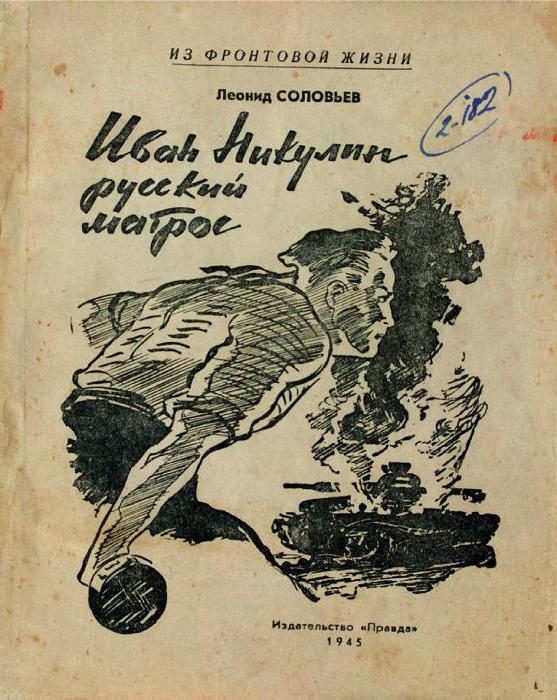For a reading person, Leonid Soloviev is, first of all, the author of two stories about Khoja Nasreddin. This hero came from oral folklore of the peoples of the East and Central Asia and taught to do good, to treat life with wisdom and optimism.
Only the writer himself had the opportunity to live in a country that did not value the uniqueness of an individual, at a time when blind faith was needed more than intelligence and talent.
Born in Syria, grew up in Central Asia
He was born in 1906 in a family of Russian intellectuals, but in the distant and hot Syria, in the city of Tripoli (today Lebanon). Parents worked in the Middle East through the missionary Orthodox Palestinian society, and upon returning to Russia they began to teach in schools of the Volga region. After the revolution, Leonid Solovyov, whose biography and work were closely connected with the culture of the East, ended up with his family in Central Asia, in Kokand.
Children's susceptibility allowed the future writer to absorb the true values of the oral folk art of the Central Asian peoples, to be imbued with its beauty and color. After graduating from school in 1922, the impressions of traveling around Turkestan and the study of folklore required a way out, and Leonid Solovyov tries himself in journalism - in the newspaper Turkestanskaya Pravda.
First literary experience
In 1927, he participated in a literary competition announced by the magazine "World of Adventures" and received a second prize. Belief in the correctness of the chosen path is growing stronger - in 1930 Leonid Solovyov entered the Institute of Cinematography at the Scripting Department and after two years graduated from it.
The ease of writing talent and the innate optimism of Soloviev are visible in the case of a funny hoax. He presented for the collection of folk songs and legends about V.I. Lenin the texts written by himself, passing them off as collected during folklore studies. Fortunately, this did not entail serious consequences, and expeditions specially sent to Turkestan were able to discover the “originals” of these creations.
The first story of Hodge Nasruddin
According to the script of Solovyov, a film is made, his work is noticed by critics and venerable masters, among whom was a living classic - Maxim Gorky, and the publication in 1940 of the book "Troublemaker" makes him very popular among readers. This amazing workshop in form and fascinating in content of the story of the legendary joker and sage, national defender became a vivid expression of the experience and memories that Leonid Soloviev accumulated over the years lived in the East.

The outbreak of the war did not allow the continuation of work on Khoja Nasreddin, the writer leaves to serve as a war correspondent for the newspaper Red Fleet. There are collections of his military stories, according to the novel "Ivan Nikulin - The Russian Sailor" a film is being shot. A film adaptation of his main book is also coming out, but when the film about the adventures of the merry sage dervish was played all over the country, the author of the script was already in the camp on charges of preparing an assassination attempt on the country's top leaders.
"The Enchanted Prince"
It is said that Leonid Soloviev, a writer who created one of the most optimistic literary images, in life was a little like his hero. The difficult character, the susceptibility to the well-known weakness that accompanies the Russian man in grief and in glory, brought a lot of suffering to both himself and his relatives.
Against adversity, he knew one means - creativity, and he wrote the second part of the dilogy about Hodge Nasruddin in the camp. Among the Gulag administration, there were fans of his story about the fun Khoja. He was not sent to a far stage and was allowed to write in his spare time. But the situation could not but tell: in the second part of Nasreddin’s adventures, a slightly different intonation appears - thoughtful and elusively sad.
“The Enchanted Prince” was received very well, “The Tale of Khoja Nasreddin” was eventually translated into many languages and was often reprinted in the country. But the time spent in detention, failures in his personal life did not pass without a trace. The psychological state and physical health were irrevocably undermined. After his release and rehabilitation in 1954, the writer lived only 8 years. In 1962, he died in Leningrad.
In the history of Russian literature of the Soviet era, there are a lot of people who lived their age in peace and prosperity, accepted official awards and recognition, published ideologically verified volumes and considered themselves writers. But there were few such as Leonid Vasilievich Solovyov - those who left books that are only interested in the talent and imagination of the author, who will read after a very long time.
Soloviev Leonid Vasilievich. Bibliography
Peru Solovyov owns such works:
- 1932 - The Nomad;
- 1934 - "Campaign" Winner "";
- 1935 - “The End of the Station” (script);
- 1938 - “Sad and funny events in the life of Mikhail Ozerov” (“High Pressure”);
- 1940 - "Troublemaker";
- 1943 - The Big Exam, Nasruddin in Bukhara (script);
- 1943 - “Ivan Nikulin - Russian Sailor” (novel and script);
- 1944 - “Sevastopol Stone”, “I am a Chernomorets” (script), “Adventures of Nasreddin” (script);
- 1954 - "The Enchanted Prince";
- 1959 - “The Overcoat” (script based on the novel by N. Gogol);
- 1960 - “Anathema” (script based on the story of the same name by A. Kuprin);
- 1963 - From the Book of Youth.